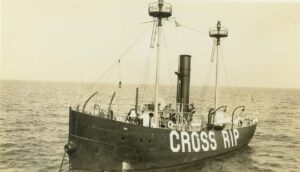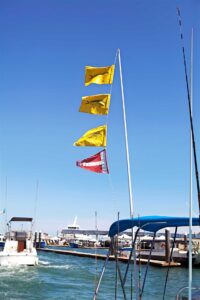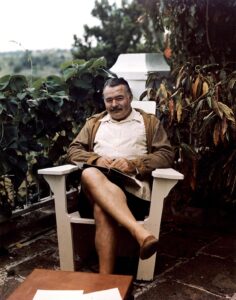The close of the War of 1812 had been good to the Gulf of Mexico pirate Jean Lafitte. In exchange for aiding General Andrew Jackson at the Battle of New Orleans, President James Madison granted Lafitte and his brigands a full pardon for their previous smuggling activities. Armed with that written clemency, Lafitte gained the respectability he needed for his new adventure: becoming the pirate king of Galveston.
The Texas Gulf Coast was originally home to the Karankawa tribe. A Spanish explorer first set foot on Galveston Island in the early 16th century, and in 1685, the French explorer La Salle, on his first expedition to discover the mouth of the Mississippi, named the island Saint Louis. Five years later, when Texas became part of the colony of New Spain, the island’s name was “Spanishized” to San Luis. A century after that, in 1785, San Luis was again renamed, this time to Gálveztown, in honor of the Viceroy of New Spain, Bernardo Gálvez y Madrid.
Louisiana, which had also been part of New Spain, came back under French control in a secret treaty between France and Spain in 1800. Napoleon then flipped that property and sold it to the fledgling United States of America via President Jefferson in 1803. Jefferson claimed that the Louisiana Purchase included the territory of Texas, Spain disagreed, and a stalemate ensued. After the War of 1812, Spain was worried about America’s ambitions and its possible encroachment on Spanish lands, and began hiring secret agents to try to learn American intentions. One of those spies was Jean Lafitte, and another was his brother, Pierre. Together, they shared the code name “Number 13.” Jean was sent to Spanish Texas, while Pierre monitored the goings on in New Orleans.
At the same time that the Lafitte brothers were aiding the Spanish government, Spain was fending off the rumblings of Mexican independence. Mexico was the keystone of the Spanish empire in the Americas, but it had declared itself a republic, and Gálveztown was named a port of this new republic. A French pirate, Louis-Michel Aury, was invited to become the port’s resident commissioner and given a letter of marque to capture Spanish vessels as prizes. Aury built the first permanent European settlement on the island in 1816. Jean Lafitte visited Gálveztown the following year to keep an eye on Aury for Spain. On April 6, 1817, Aury sailed from Gálveztown with his squadron to help the Mexican army of independence, and Lafitte promptly took command of the barrier island. With the Gulf of Mexico on one side and an inland bay on the other, Lafitte thought Gálveztown an ideal base for smuggling and piracy. He renamed it Campeche, and appointed himself its leader.
Lafitte built himself a two-story headquarters, which he painted red and surrounded with a moat for protection. It was dubbed “Maison Rouge.” Here he created letters of marque from his “kingdom” which he handed out to his loyal followers, allowing them to become privateers preying on ships of all nations.
By that time, the United States Congress had passed a law aimed at ending the African slave trade by prohibiting slaves for sale from entering U.S. ports on ships from foreign lands. However, a loophole in the law allowed anyone who captured a slave ship to sell those slaves in the U.S. and keep half the profits. Lafitte took advantage of this loophole with another smuggler, Jim Bowie, and they resold the captured slaves in New Orleans.
Campeche thrived for a few years, reaching a population of about a thousand followers of Jean Lafitte. It was reported that Lafitte married Madeline Regaud there in 1820, and she bore him a child, Jean Pierre Lafitte. The following year, 1821, the U.S. decided to end piracy in the Gulf once and for all and dispatched the schooner USS Enterprise to wipe out Campeche. Sensing the futility of a fight, Lafitte burned Maison Rouge and the rest of his settlement, and on May 7, 1821, sailed off on his flagship vessel, Pride.
Four months later, the Declaration of Independence of the Mexican Empire was signed, and the war for independence carried on without Lafitte. Instead, he ventured to the newly independent nation of Colombia, where he received a commission in that country’s new navy. Once again, Lafitte would be doing what he did best: acting as a government-sanctioned commerce raider. But while attacking two Spanish ships in February 1825, Lafitte was mortally wounded. He was buried at sea, and praised as a brave naval officer in his Colombian obituaries.
In 1836, Spain officially recognized an independent Mexico. That same year, Jim Bowie died at the Alamo and the Republic of Texas came into being. During the Texas Revolution, Galveston served briefly as the capital of the Republic of Texas.
Today, Lafitte’s legacy lives on at Galveston’s Pirates! Legends of the Gulf Coast Museum, and their summer pirate day camp for kids. But for those who want a brush with the real Lafitte, the remains of his Maison Rouge are just a half mile away, by the Galveston wharves.
Where to dock
- Galveston Yacht Basin (409-765-3000, galvestonyachtbasin.com)
- Harbor House Hotel & Marina at Pier 21 (409-763-3321, harborhousepier21.com)





